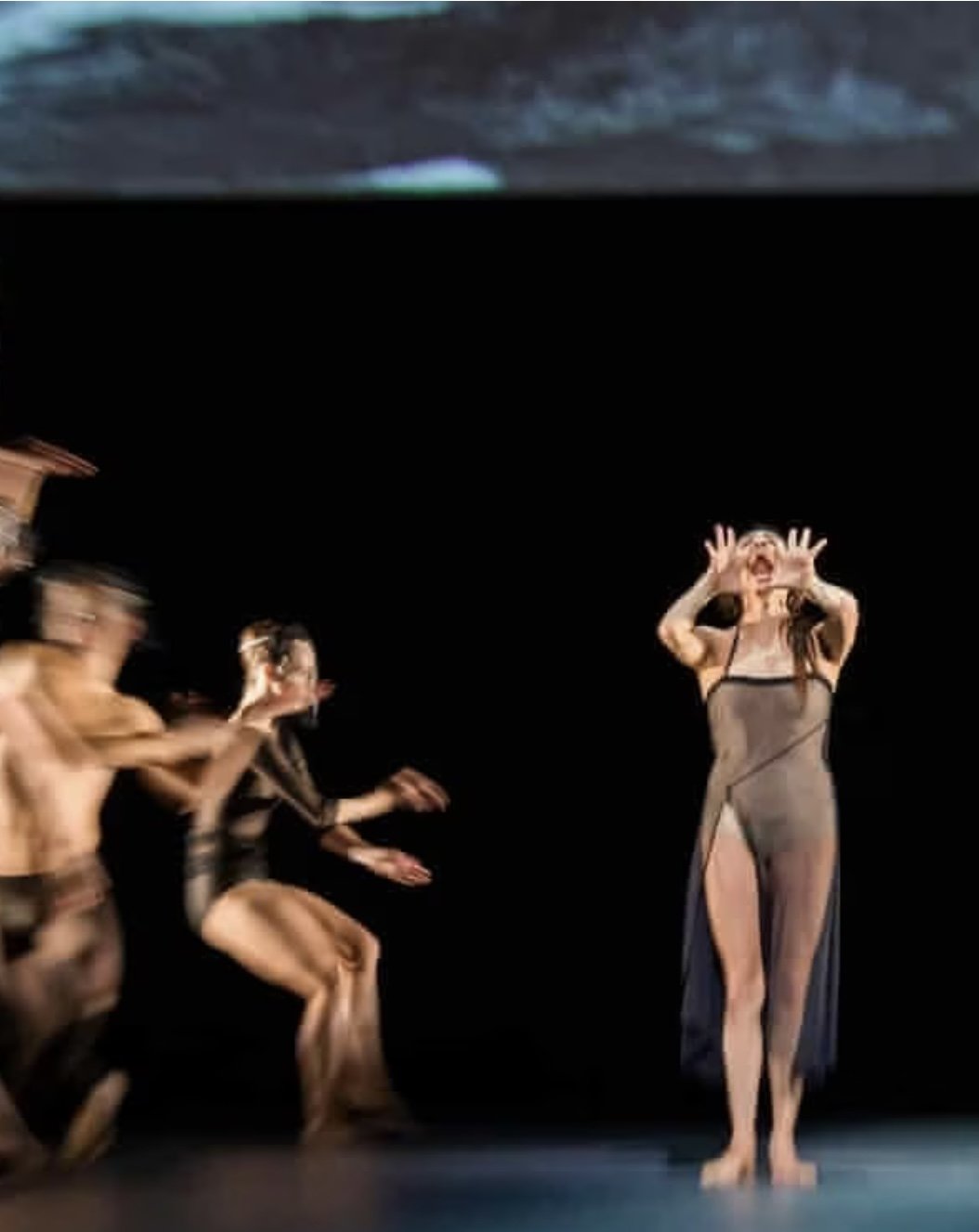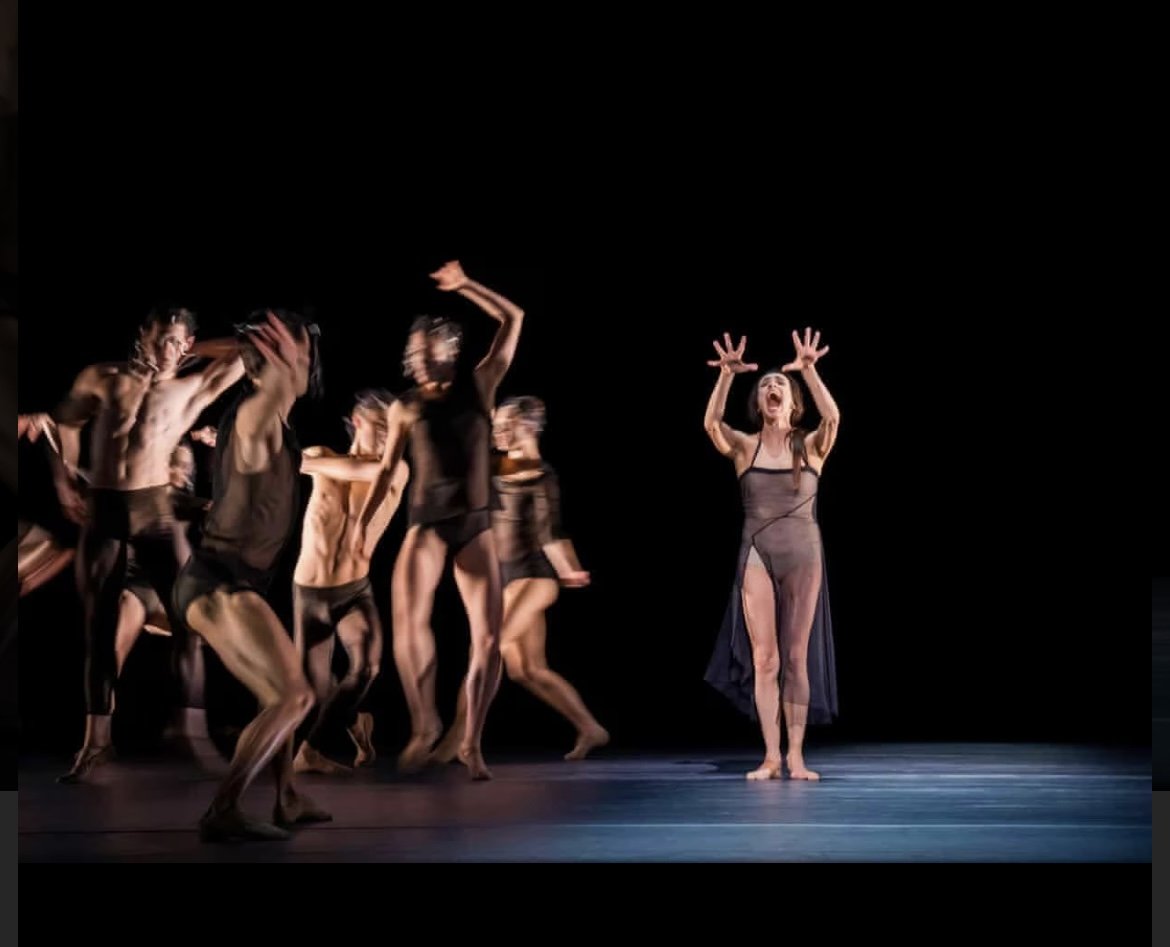Wayne McGregor’s “Woolf Works”
There’s a brave-new-world quality to the choreography of Wayne McGregor that often makes his work feel truly of the twentyfirst century. The casting is racially diverse, with a striking spectrum of skin colours. There are also spectrums of genders and sexualities: same-sex partnerships and relationships are given prominence often equal to opposite-sex connections. Social structures are non-hierarchical.
On Wednesday March 1, his three-act ballet “Woolf Works”, new in 2015, returned to Royal Ballet repertory, for twelve performances ending on March 23. Its stage worlds often show how Virginia Woolf (1882-1941) anticipated our modern era. It highlights her attention to ambisexuality and to androgyny; it evokes a modern woman’s view of both the ranges of both masculinity and femininity; it makes dramas from memory, existentialism, and reflectiveness; it interweaves transhistorical and transsexual games; and finally it sketches an absorption in the end of life and the surrender to death. While the three parts of “Woolf Works” are abstractions or approximations of individual Woolf novels - “I now, I then” based on “Mrs Dalloway (1925), “Becomings” on “Orlando” (1928), and “Tuesday” on “The Waves” (1931) - they’re framed by aspects of Woolf’s own life and views on writing. It begins with a 1937 BBC recording of her reading (with a classy melodiousness that now sounds quaint) her own essay “On Craftsmanship” about words themselves. It ends with imagery that evokes Woolf’s own suicidal immersion in a river - her surrender to forces larger than herself - and her farewell assurance that no happiness could have been greater than that found in her marriage to Leonard Woolf.
In performance, it is carried by a beautifully affecting performance by Alessandra Ferri as both Woolf herself and as her character the older Clarissa Dalloway. Ferri, whose first appearance on the Covent Garden stage in 1980 I keenly remember, has now a theatrical simplicity that does much to transcend anything she is performing. She has stillness and slowness; she has rapture and intensity - although her open-mouthed displays of facial suffering mar the choreography by suggesting that it needs underlining. (The Royal Ballet is generally going through one of its periods of exaggerated facial expressions.)
McGregor has the accomplishment to create a different movement style for each of his three parts, and to keep adding variations on that style. “Woolf Works” demonstrates the vital idea of the three-act form: it gives the audience a large and imaginative arc. Although McGregor is famous for his use of acrobatic hyperextensions, with legs sweeping up and past the sideways splits, he actually withholds that idiom until the central “Becomings”. Only in the finale does he introduce the look of liquidity with which Woolf’s life turns into death.
And yet “Woolf Works” entirely fails to do with movement what Woolf herself, in those introductory words on craftsmanship, says about words and sentences. “Words belong to each other, although only a great poet knows that the word ‘incarnadine’ belongs to ‘multitudinous seas.’” (Her reference is to Shakespeare’s “Macbeth”.) McGregor’s choreography abounds with effects that we can compare to such locutions as “incarnadine” and “multitudinous”, but he has minimal skill in what Woolf calls “the constitution of the sentence”.
If you are old enough to remember the linguistic brilliance with which Frederick Ashton and George Balanchine kept reinvigorating ballet even in such late works as “Rhapsody” (1980) and “Mozartiana” (1981), it may be tempting to feel that such mastery has passed from the world, but actually that’s wrong. Pam Tanowitz’s “Four Quartets” (2018, seen at the Barbican in 2019) is a work that “lives in the line”, a masterpiece whose steps connect into eloquent phrases of gorgeous internal vitality - and a work that’s far more deeply absorbed in T.S.Eliot’s language, imagery, and ideas than McGregor ever is with Woolf’s.
McGregor claims your attention with a movement idea. Then he gives you that idea again, and again. His style is often loosely, sometimes attractively, impressionistic. But it doesn’t give you real dancing - in which the body becomes shape and rhythm - so much as it gives you dancerliness, the mannerist reproduction of isolated wow dance impressions. Just look at that jump where the legs beat, audibly, before parting! Just look at how the ballerina arches back swooningly in her partner’s arms! Just look at how those six-o’clock legs turn yet further! These and others are all known effects, older than McGregor’s work, but he harps on them insistently.
That doesn’t make McGregor a bad or incompetent choreographer. He’s an important theatre artist whose work is weakest when it comes to the composition of a dance phrase. In two other respects, though, his work is thoroughly unimportant: its music and its (lack of) choreographic musicality. Max Richter’s score, grossly amplified, is souped-up film-score minimalism without tears, interlaying macro- and micro-structures in tonally unchallenging ways that glaze the mind. In “I now, I then”, Ferri has a brief moment when she connects movement to music with meditative eloquence. The moment, however, soon passes.
The real virtues of “Woolf Works” cannot be overlooked. This season, Ferri’s role will also be essayed by Natalia Osipova and Marianela Nuñez, two of the Royal’s most eminent primas. At no point, however, does McGregor prove himself a master of making dances. And in his choice of soundscape, he turns Covent Garden into a movie house, with synthetic overlays of manipulative, sentimental, and synthetic aural exaggeration.
March 2, 2023
1: Alessandra Ferri and members of the Royal Ballet in Wayne McGregor’s “Woolf Works”. Photograph: Tristram Kenton.
2: Alessandra Ferri and members of the Royal Ballet in Wayne McGregor’s “Woolf Works”. Photograph: Tristram Kenton.
3: Alessandra Ferri and members of the Royal Ballet in Wayne McGregor’s “Woolf Works”. Photograph: Tristram Kenton.



